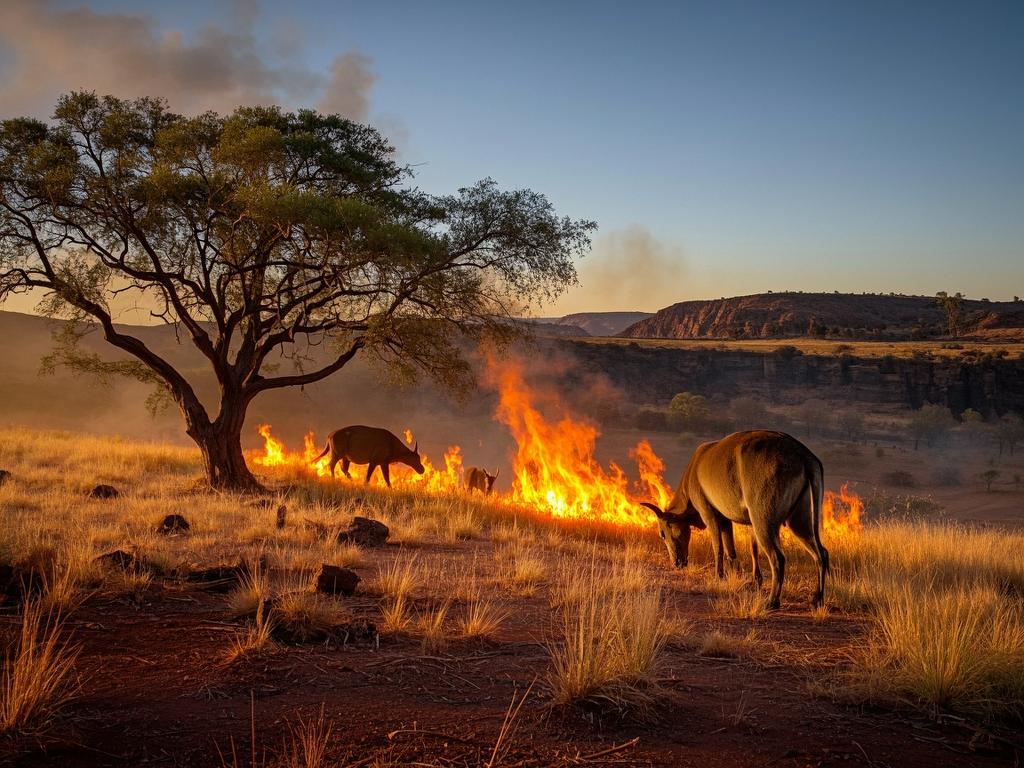
# The Vast Deserts of Australia: Outback Wonders in Peril
Australia's deserts are a realm of unparalleled beauty and mystery. The Outback, with its vast stretches of arid landscapes, stands as a unique ecosystem that has captivated the imaginations of many. However, this wonderland is now facing unprecedented threats, and it's high time we take notice.
The Australian deserts, covering a significant portion of the continent, are home to a diverse range of flora and fauna found nowhere else on Earth. Take, for instance, the iconic red kangaroo. These marsupials have adapted masterfully to the harsh desert conditions, with their powerful hind legs allowing them to cover vast distances in search of scarce water and food. They are a symbol of the Outback's resilience, but even they are under pressure.
The desert ecosystem is a delicate balance. The native plants, like the spinifex grass, have evolved over millennia to thrive in the dry, sandy soil. Their deep root systems help them access water sources deep beneath the surface, and they provide crucial shelter and food for countless insects and small animals. But climate change is disrupting this equilibrium at an alarming rate.
Data shows that the average temperature in the Australian deserts has been rising steadily. In the past few decades, it has increased by about 1.5 degrees Celsius, which might not seem like much, but in the arid environment, it's having a profound impact. This rise in temperature is leading to more frequent and intense heatwaves. Heatwaves not only endanger the survival of the native species but also increase the risk of wildfires, which are becoming more common and devastating.
Wildfires in the Australian deserts are no longer an occasional occurrence. In recent years, they have swept across vast areas, destroying habitats and killing countless animals. The frequency of these fires has doubled in the last decade alone. The destruction is not just limited to the immediate loss of life and habitat. The fires also release huge amounts of carbon dioxide into the atmosphere, further exacerbating the climate change problem. It's a vicious cycle that we need to break.
Another major threat to the Australian deserts is the invasion of non-native species. Feral camels, for example, have multiplied rapidly in the Outback. These camels were introduced in the 19th century for transportation purposes but have since become a nuisance. They consume large amounts of water and vegetation, competing with native wildlife for resources. There are now an estimated one million feral camels in Australia, and their numbers are growing at an alarming rate of 10% per year.
The water situation in the deserts is also dire. Groundwater levels are dropping steadily due to over-extraction for human use, agriculture, and mining. Many of the native water-dependent plants and animals are suffering as a result. The lack of water is also stressing the entire ecosystem, making it more vulnerable to other threats such as heatwaves and wildfires.
The Australian government has, to some extent, recognized the importance of protecting the deserts. There are conservation areas and national parks established to safeguard the unique flora and fauna. However, the funding for these conservation efforts is often insufficient. With budget cuts in recent years, many rangers and conservation programs are struggling to keep up with the increasing threats.
As ecologists, we need to be more vocal about the plight of the Australian deserts. We should encourage the government to allocate more resources to conservation. We need to conduct more research to understand the complex interactions within the desert ecosystem better and develop more effective strategies for protection.
Moreover, we as a global community need to take responsibility for climate change. The actions we take in other parts of the world have a direct impact on the Australian deserts. Reducing our carbon emissions, transitioning to renewable energy sources, and promoting sustainable living are essential steps.
The Australian deserts are not just a natural wonder; they are a part of our global heritage. If we don't act now, we might lose these Outback wonders forever. Let's come together, as individuals and as a global community, to save the vast deserts of Australia from the brink of disaster. Will you join the fight?
We need to start a conversation, raise awareness, and push for real change. Share this message with your friends, family, and social media followers. Let's make sure that the future generations can still marvel at the beauty of the Australian deserts, with their unique plants, hopping kangaroos, and the vast expanse of red sand dunes under a clear blue sky. But time is running out, and the clock is ticking for these Outback wonders.
We can no longer afford to be complacent. It's time to roll up our sleeves and take action. Whether it's supporting conservation organizations, advocating for stronger environmental policies, or making small changes in our own lives to reduce our environmental footprint, every little bit counts. So, are you ready to be a part of the solution and help save the Australian deserts? The fate of these amazing Outback wonders is in our hands.

